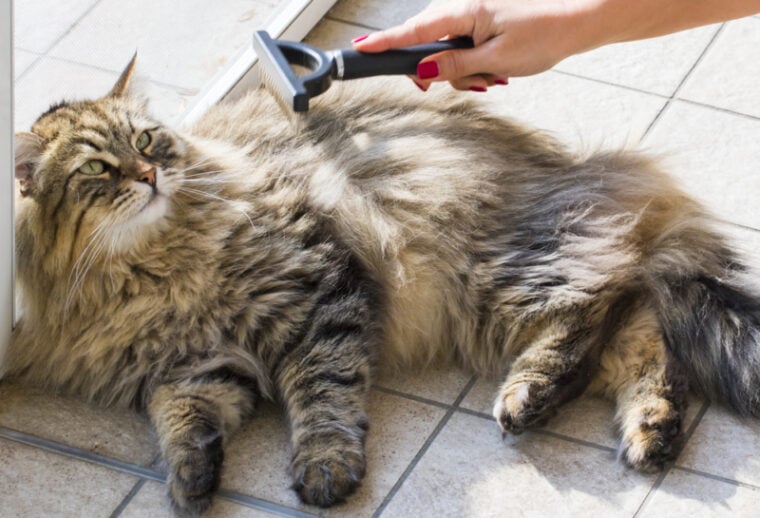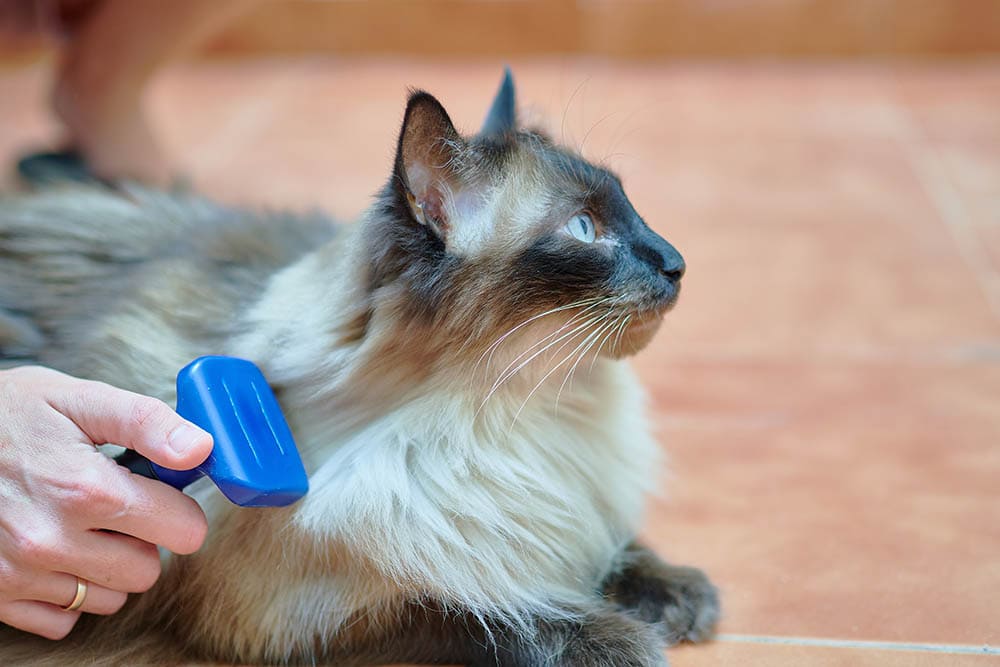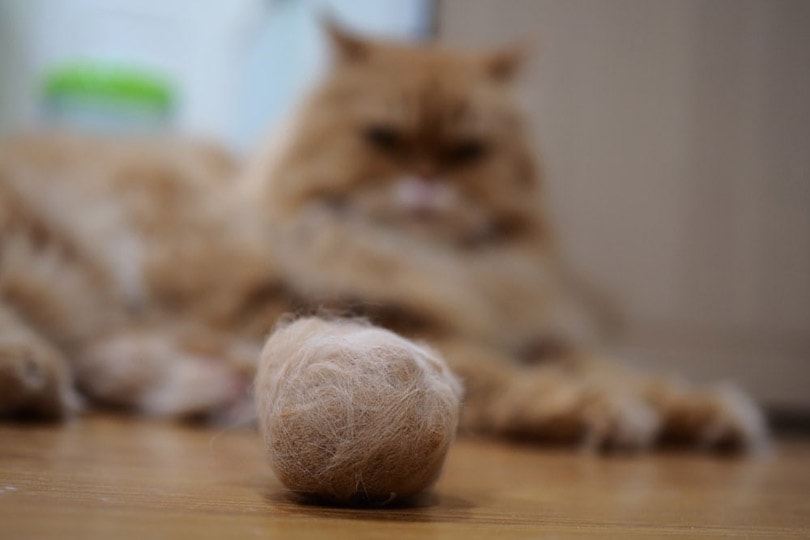
If you’re a cat owner, you’re probably used to spending a small fortune on lint rollers and constantly apologizing to guests who stand up from your couch covered in kitty hair. All cats with fur shed as part of their normal hair growth cycle. Shedding is the natural way that your cat gets rid of dead hair as new growth occurs.
In this article, you’ll learn which factors impact when and how much your cat sheds. We’ll also discuss how to manage the mess that shedding makes of your house. Finally, we’ll examine the signs to watch for indicating your cat is shedding too much and could have a medical issue.
All Cat Shedding Is Not Created Equal
Although all cats with coats shed, several factors influence how much and when they lose their hair. Long-haired cats usually shed more than short-haired ones. Certain cat breeds may also shed more or less than others. Your cat’s diet and age can also play a role in how much loose hair ends up collecting in your house.
Typically, the environment plays a role in the cat’s shedding cycle. For example, as the seasons change, cats may experience one or two heavy shedding periods each year. However, indoor cats may constantly shed year-round because they live in a temperature-controlled environment.
Stress may cause your cat to shed more heavily. Female cats will also shed more fur if they’re pregnant or lactating. Finally, your cat’s genetics help determine its unique shedding pattern. Every cat is different, including how much and how often they shed their fur.
The 5 Tips to Help Control Shedding
1. Brush Your Cat Regularly
The most effective way to control the amount of hair in your house is to brush your kitty regularly, especially when they experience heavier, seasonal shedding. If you adopt a kitten, get them used to brushing early to make the process easier as they grow. Long-haired cats usually need to be brushed more frequently to keep them tangle-free and help control shedding.

2. Feed a Balanced Diet
Cats that don’t eat a proper diet may shed more heavily than those that do. Make sure you feed your cat a quality, nutritionally balanced diet. Commercial cat foods are required to meet basic nutrition standards, and high-quality cat food is all your feline needs. A homemade diet often lacks vital nutrients that contribute to poor coat quality and excessive shedding. Before attempting to make cat food, talk to your vet or a veterinary nutritionist for advice. Crafting a meal that contains all the necessary nutrients that cats require is complicated, and it’s usually not cheaper than purchasing commercial formulations.
3. Use Parasite Control
While you may think using flea-prevention products for an indoor cat is unnecessary, that’s not the case. Fleas can easily be carried indoors by other pets or humans and quickly infest your unprotected kitty. Parasite infestations can cause your cat to shed more. Ask your vet to help you choose the right flea control product for your pet and use it as directed.
4. Reduce Stress
Keep your kitty’s environment as stress-free as possible by providing plenty of toys, scratching posts, and other enrichment. Spend time playing and interacting with your cat every day, and consider using cat pheromone products to ease stress. See your vet for assistance if you notice other signs of stress, such as peeing outside the litter box.

5. Clean Regularly
Regular cleaning can also help keep the hair in your home to a minimum. Vacuuming or using a static cleaner like a Swiffer are better options than dry sweeping. Wash your cat’s bed and your bedding frequently. Consider using washable covers to protect your furniture to make it easier to keep them hair-free.
How Much Shedding Is Too Much?
Even if it seems like your cat is shedding endless quantities of loose hair, their overall coat should still appear full, healthy, and shiny. Several health conditions can result in your cat losing more hair than it would during a normal shedding cycle. Those conditions may include the following:
Here are some signs that may indicate your cat’s shedding may indicate a medical problem:
If you notice any of these signs or are concerned about your cat, visit your veterinarian.

Conclusion
You’ll never completely rid your home of cat hair, even if you follow all these tips. Certain aspects of pet ownership are unpleasant, including the hair you keep finding on the couch. Sometimes the best you can do is invest in a good brush, clean frequently, and watch for any signs that your cat’s hair loss has progressed past shedding and has become a health concern.
See also: Why Is Your Cat So Staticky? 6 Reasons Why & Tips to Reduce
Featured Image Credit: Massimo Cattaneo, Shutterstock







